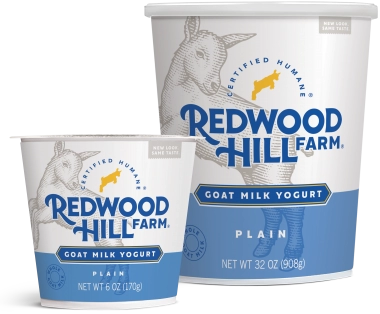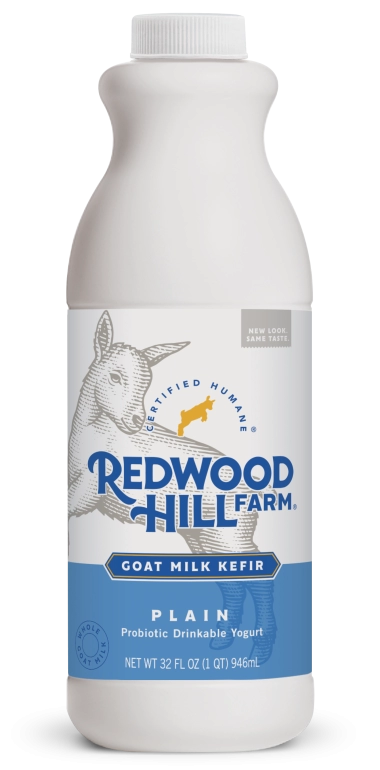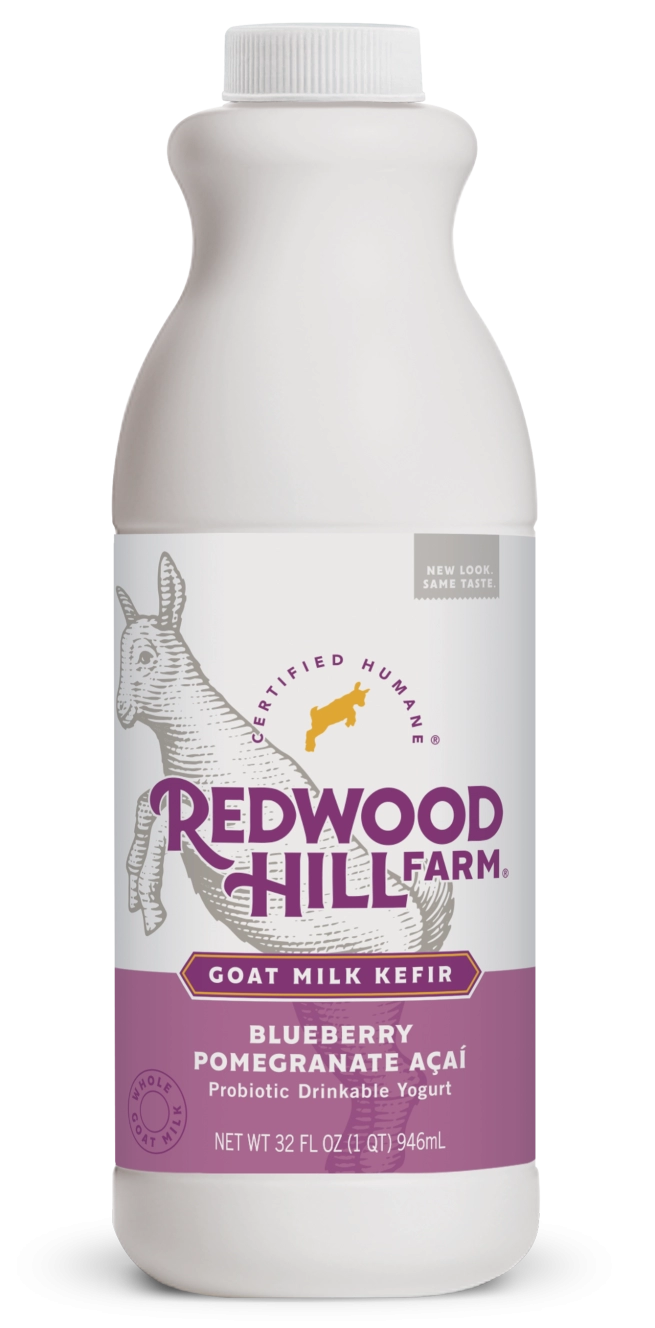Since the beginning, the goal of Redwood Hill Farm’s dairy goat breeding program has been to achieve “the winning combination of milkability and showability,” a term coined by the late Steven Schack, who started Redwood Hill Farm & Creamery with Jennifer Bice in 1978. Jennifer’s passion for dairy goats began at a young age, when she and her nine younger siblings raised dairy goats as 4-H projects on their parents’ small farm in Sebastopol, CA. For Jennifer and the other Bice children, attachment to these smart and personable animals came naturally.
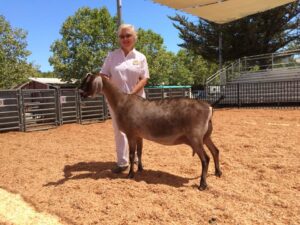
While expanding Redwood Hill Farm’s line of goat milk products and growing their business, Jennifer and Steven’s herd continued to evolve and improve. Together, they won their first Premier Breeder of Show award at the ADGA (American Dairy Goat Association) National Show in 1982; then again in 1984 and 1986. Sadly, Steven passed away in 1999. Jennifer kept his herd name—“Companeros”—to honor his memory and love for the Saanen breed. His Companeros herd of Saanens continues to impact the dairy goat world to this day, and Redwood Hill Farm has been awarded National Champion multiple times in the Saanen, Alpine and Nubian breeds.
So, what makes a winning dairy goat? When judging, the ADGA licensed judge is required to evaluate the dairy goat based on four major categories: General Appearance, Dairy Strength, Body Capacity, and Mammary System. This is not a beauty contest; the scorecard, which consists of 100 points total, is based on traits that will ensure a long and productive life.
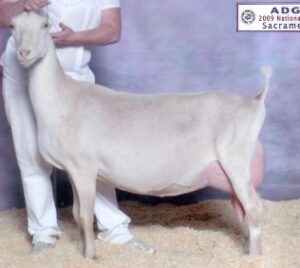
General Appearance
1. General Appearance is the structure of the dairy goat: including head, back, shoulders, feet and legs. Overall, the judge looks for an attractive framework. A Lamancha doe,“Kastdemur’s Evian” in the photo at right, is a good example of a doe with fine general appearance.
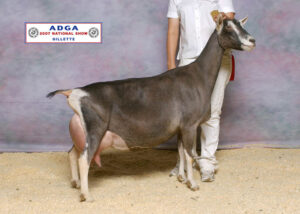
Dairy Strength
2. Dairy Strength covers attributes that indicate good milk production, such as angularity and openness of the rib and flatness of bone. “Amicale” in the photo at right excels in dairy strength, and has been awarded National Champion Alpine.
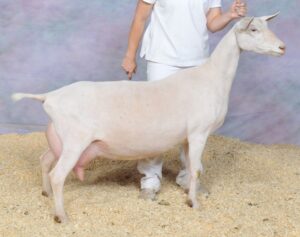
Body Capacity
3. Body Capacity correlates the width and depth of the body, ensuring ample capacity, strength and vigor. “Vineyard View Foxy Traveler,” right, is a Saanen with great body capacity.
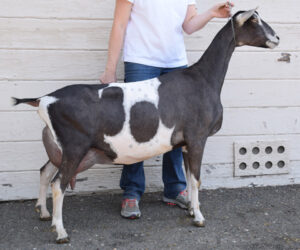
Mammary System
4. The Mammary System category evaluates areas of the udder that will be important for a long, productive life. Although capacity in the mammary is significant, teat size, teat placement, udder shape and attachment are also very important. “Redwood Hills Rainbow,” our Alpine shown at right, has an excellent overall mammary system.
We’re continually improving our herd at Redwood Hill Farm. Jennifer is still actively involved in the breeding program and handling goats at shows. Her lifetime with goats began in 4-H, and she’s been a licensed ADGA judge for 42 years. She still likes to call our farm “a 4-H project that went out of control.” Her brother Scott Bice, Farm Manager at Redwood Hill Farm, is also a licensed dairy goat judge and keeps his own herd of “Vineyard View” dairy goats within our herd at Redwood Hill Farm. Scott and the farm crew are busy all year long at our Certified Humane Raised & Handled® farm, keeping the herd healthy and in tip-top shape for goat show season.
Of course, good breeding is just the beginning. When goats are happy, healthy and well-bred, you can really taste the difference; the best dairy always comes from the freshest, cleanest milk. Redwood Hill Farm’s yogurt, kefir and cheese are minimally processed, with a mild and uniquely delicious flavor. Our products have received top prizes from the American Cheese Society, the American Dairy Goat Association, and the California State Fair, to name a few. From award-winning dairy goats come award-winning products. A winning combination.
